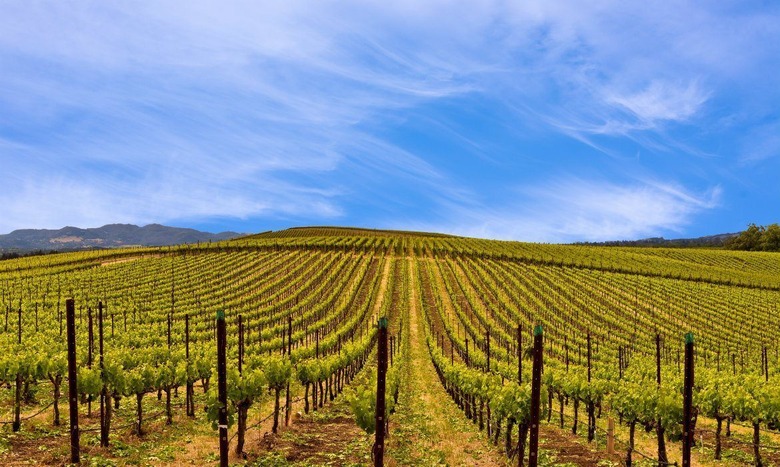Chateau St. Jean's Cinq Cépages And The Art Of Blending
During a recent week split between Sonoma County and Napa Valley, I had a ton of diverse and interesting wine experiences that are going to resonate with me for a long time. One visit on the press trip I participated in was to Chateau St. Jean.
This Sonoma County producer has a diverse portfolio of wines in several tiers. I had the opportunity to taste quite a few of their wines, visit some of their vineyards, and watch their brand new optical sorter select grapes, all with their longtime winemaker Margo Van Staaveren. However the highlight of the half a day I spent on their property was a blending session. We sat down with Margo and had all of the components that went into the 2012 vintage of Cinq Cépages in front of us. After tasting them separately we were able to make our own blends and compare them to the finished wine.
Each of the wines we came up with was interesting in its own right, but not the best overall wine necessarily. What they showed more than anything was each of our individual preferences or biases. Mine, for instance, was fairly heavy on petit verdot and cabernet franc, which just shows how much I love the classic franc characteristics of a big nose and the velvety heft of petit verdot. Listening to Margo talk about the components and the blending process was akin to a master class.
Part of the art of what she does one vintage after another is based on her experience with the grapes, this particular wine, and what a vintage year gives her to work with. But another part of it, one that she didn't mention but that was obvious in the final results, she takes her own biases out of it and serves the greater good of the final wine. When you taste the 2012 vintage of Cinq Cépages (and you should) you'll see what I mean.
It's an impressive and harmonious reflection of 2012. And having have the opportunity to make my own blends, and observing others with varying levels of experience and skill do the same, using the same raw parts Margo used, it's clear she knows precisely how to make the ultimate version each year.
Chateau St. Jean 2012 Cinq Cépages, $80
The 2012 vintage of their signature wine marries cabernet sauvignon (84 percent), merlot (6 percent), cabernet franc (6 percent), malbec (2 percent), and petit verdot (2 percent). Each of the components was aged separately for 20 months in a combination of French and American oak. Once the final blend is assembled, the wine spends a year in bottle prior to release. Toast, vanilla, and dark fruit aromas fill the welcoming nose. All of those elements continue on the palate along with red cherry, dusty chocolate, and a bevy of spices. Black tea, espresso, black pepper, and more are all part of the finish which is long, persistent and luxurious. Firm tannins and acid provide excellent structure.
What I love most about this wine is what a cohesive and perfectly woven together offering it is. Each of our own trial blends leaned heavy in one direction or another. The final and real version of Cépages stands head and shoulders above other attempts due to its remarkably unified nature. This is a wine with a remarkable pedigree over many years. 2012 is a particularly good vintage; put those two things together and this is a slam dunk recommendation. Gift it, age it for a decade plus, or serve it with an important meal. In any of those instances, you'll win the day.
